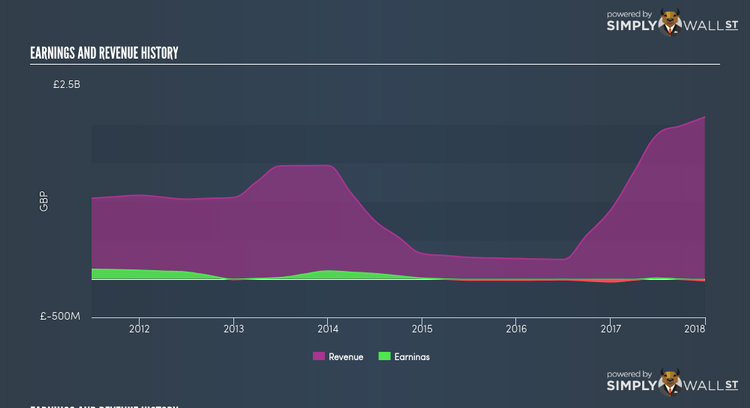Has Melrose Industries PLC (LON:MRO) Improved Earnings Growth In Recent Times?

Understanding how Melrose Industries PLC (LSE:MRO) is performing as a company requires looking at more than just a years’ earnings. Today I will run you through a basic sense check to gain perspective on how Melrose Industries is doing by comparing its latest earnings with its long-term trend as well as the performance of its electrical industry peers. View our latest analysis for Melrose Industries
How MRO fared against its long-term earnings performance and its industry
I like to use data from the most recent 12 months, which annualizes the latest 6-month earnings release, or some times, the latest annual report is already the most recent financial data. This allows me to assess different stocks in a uniform manner using new information. For Melrose Industries, its latest trailing-twelve-month earnings is -UK£23.90M, which, against last year’s level, has become less negative. Since these values may be relatively short-term, I’ve calculated an annualized five-year value for Melrose Industries’s earnings, which stands at UK£27.47M.
We can further assess Melrose Industries’s loss by looking at what the industry has been experiencing over the past few years. Each year, for the last five years Melrose Industries’s revenue growth has been fairly soft, with an annual growth rate of 0.91%, on average. The company’s inability to breakeven has been aided by the relatively flat top-line in the past. Inspecting growth from a sector-level, the UK electrical industry has been growing its average earnings by double-digit 28.73% in the past year, and a less exciting 7.40% over the past five. This means that, despite the fact that Melrose Industries is currently running a loss, it may have benefited from industry tailwinds, moving earnings into a more favorable position.
What does this mean?
Melrose Industries’s track record can be a valuable insight into its earnings performance, but it certainly doesn’t tell the whole story. Companies that incur net loss is always difficult to envisage what will happen in the future and when. The most useful step is to assess company-specific issues Melrose Industries may be facing and whether management guidance has steadily been met in the past. You should continue to research Melrose Industries to get a better picture of the stock by looking at:
Future Outlook: What are well-informed industry analysts predicting for MRO’s future growth? Take a look at our free research report of analyst consensus for MRO’s outlook.
Financial Health: Is MRO’s operations financially sustainable? Balance sheets can be hard to analyze, which is why we’ve done it for you. Check out our financial health checks here.
Other High-Performing Stocks: Are there other stocks that provide better prospects with proven track records? Explore our free list of these great stocks here.
NB: Figures in this article are calculated using data from the trailing twelve months from 31 December 2017. This may not be consistent with full year annual report figures.
To help readers see pass the short term volatility of the financial market, we aim to bring you a long-term focused research analysis purely driven by fundamental data. Note that our analysis does not factor in the latest price sensitive company announcements.
The author is an independent contributor and at the time of publication had no position in the stocks mentioned.

 Yahoo Finance
Yahoo Finance 
